Over the past two decades, most indicators of peacefulness have deteriorated, according to the 2024 Global Peace Index. Old and new conflicts, and our political and cultural polarization, are the main culprits.
Peaceful Nations Generate Economic Value
Peace, some people say, starts with a smile. Peaceful societies enjoy greater income growth, stronger currencies and higher foreign investment—not to mention political stability and a greater sense of happiness among their citizens.
The economic impact of violence on the global economy is quantifiable: in 2023, it accounted for $19.1 trillion in purchasing-power parity (PPP) terms, or 13.5% of total global GDP—that’s $2,380 less economic output for each person on the planet. This represents an overall increase of $158 billion from the year before, and was largely driven by a 20% increase in GDP losses from conflict. Meanwhile, expenditure on peacebuilding and peacekeeping efforts totaled just $49.6 billion, less than 0.6% of total military spending.
These are the most significant takeaways from the 2024 Global Peace Index, the world’s leading measure of global peace. Compiled by the international think-tank Institute for Economics and Peace (IEP), it covers 163 independent states and territories home to 99.7% of the world’s population. The ranking, which is based on 23 indicators grouped into three criteria (societal safety and security; extent of ongoing domestic and international conflict; and degree of militarization), shows 65 countries recording improvement and 97 showing deterioration, more than any year since the inception of the Global Peace Index in 2008.
Global Peace by Region
In total, the level of global peacefulness decreased this year by 0.56% according to the IEP researchers. That might not seem like much, yet it is worth noting that it is the twelfth time that the average has declined, for an overall reduction of 4.5% since the index was launched. Meanwhile, the number of refugees and internally displaced persons has rocketed to 95 million, with 16 nations with at least 5% of the population are either refugees or internally displaced.
It should be no surprise that political instability and unresolved internal conflicts are major factors undermining global peacefulness. Afghanistan ranked as the world’s least peaceful country for six years in a row but has been surpassed in this year’s edition of the Peace Index by South Sudan, Sudan and Yemen which now holds that unenviable distinction. Ukraine—which last year recorded the largest deterioration in the index, falling 14 places to the 157th spot—dropped 2 positions further, to 159. Needless to say, the conflict in Gaza also has had a negative impact on global peacefulness, with Israel and Palestine recording the first and fourth largest deteriorations in the ranking, respectively. Ecuador, Gabon and Haiti were the other nations that experienced a sharp decline.
On the whole, last year saw 162,000 deaths due to conflict, marking the second-highest toll in three decades. The wars in Ukraine and Gaza were responsible for nearly 75% of these fatalities with Ukraine alone accounting for over half (83,000 deaths) while Gaza saw at least 33,000 deaths by April 2024. Another worrying trend is that conflicts are becoming more internationalized: 92 countries are now involved in external conflicts in some form—the respective figure from the 2008 index was just 33.
Even more concerning, the Institute for Economics and Peace researchers point out, many of the factors that typically precede major conflicts are more pronounced today than they have been since the end of the Second World War. There are currently 56 active conflicts, the most since the late 1940s, with fewer conflicts being settled, militarily or through peace agreements.
Regional Distribution of Peaceful Countries
Regionally, North America recorded the largest average deterioration of all the regions, with a drop of almost 5% primarily driven by increases in violent crime and fear of violence in both Canada and the US. Home to four of the ten least peaceful countries in the world, the Middle East and North Africa (MENA) is the least peaceful region globally. Sub-Saharan Africa, the second least peaceful region, also recorded a fall in peacefulness this year.
Elsewhere, Central America and the Caribbean’s average fell slightly by 0.17%, with seven out of 12 countries declining in their scores and five countries improving. Notably, El Salvador and Nicaragua recorded respectively the first and third-highest improvements globally. South America declined too (by 3.6%) as a result of deteriorations in the Safety and Security and Ongoing Conflict domains.
Western Europe remains the world’s most peaceful region overall, with seven nations placing in the top 10, including the top three slots. Europe’s strength arises from its relatively low internal conflict and political instability and high socio-economic development, buoyed by longstanding efforts to develop peaceful societies at home. Still, last year, the continent recorded its largest year-on-year increase in military expenditure since the index’s inception. Behind Western Europe, Asia-Pacific is the second most peaceful region, with the overall score deteriorating by 0.1%.
The only regional improvement in peacefulness, by 0.6%, occurred in the Russia and Eurasia region, largely due to the bounce-back effect from the steep decline experienced after Russia’s full-scale invasion of Ukraine in February 2022. Still, the overall levels of peacefulness in the region remain very low compared to its historical averages.
Positive Peace From The World’s Most Peaceful Countries
Amid widespread global turmoil, perhaps the more peaceful nations show a way forward. While countries like Iceland and New Zealand may benefit from their geographic isolation—making them more culturally cohesive and less exposed to territorial disputes—several nations in the top positions of the index fought vicious wars at one point in history, but today are integral members of the world’s most peaceful region, Europe. Elsewhere, Singapore and Malaysia illustrate the impact of democratic institutions and economic growth, as well as the ability to draw important lessons from a past marked by struggle and poverty, on bolstering peace.
While the institutions that manage societies—at least in terms of global averages—have generally improved and become more efficient and transparent, conflicts and violent protests stemming from opposing political views have increased across the world over the past decade, they have accelerated during the Covid-19 pandemic, and have continued after. Peaceful societies are not weighed down by the costs and burdens of violence, political instability and corruption, and they are more productive, informed and educated.
Top 10 Most Peaceful Countries According to the Global Peace Index:
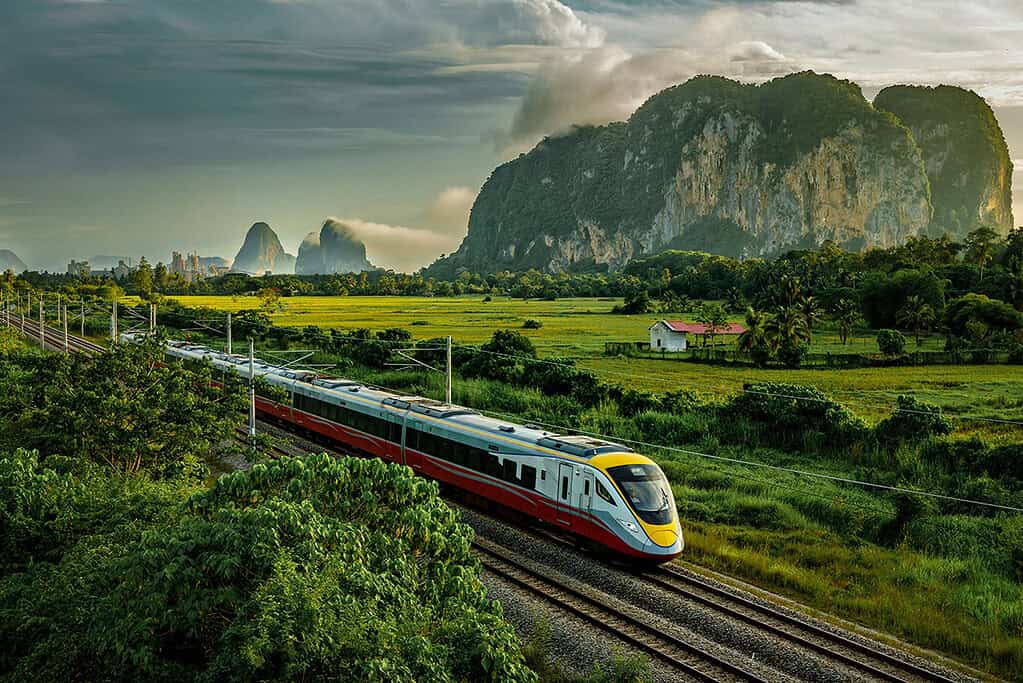
#10 | MALAYSIA🇲🇾
Ranking as the third most peaceful country in the Asia-Pacific region, Malaysia holds the top global position in the Ongoing Domestic and International Conflict domain and ranks third in the Militarization domain. Remarkably, this nation of about 33 million people has climbed 9 spots from last year, entering the top 10 for the first time. When the Peace Index was launched in 2008, Malaysia stood at the 32nd position.
A multicultural society with a diverse mix of Malay, Chinese, Indian and indigenous communities, Malaysia benefits from government policies promoting tolerance and encouraging inclusivity. Crime rates are low compared to other countries in the region, and a prosperous economy helps reduce poverty and inequality. Additionally, since gaining independence in 1957, Malaysia has enjoyed relatively stable governance, fostering a more harmonious social and political environment.
View Malaysia GDP and Economic Data
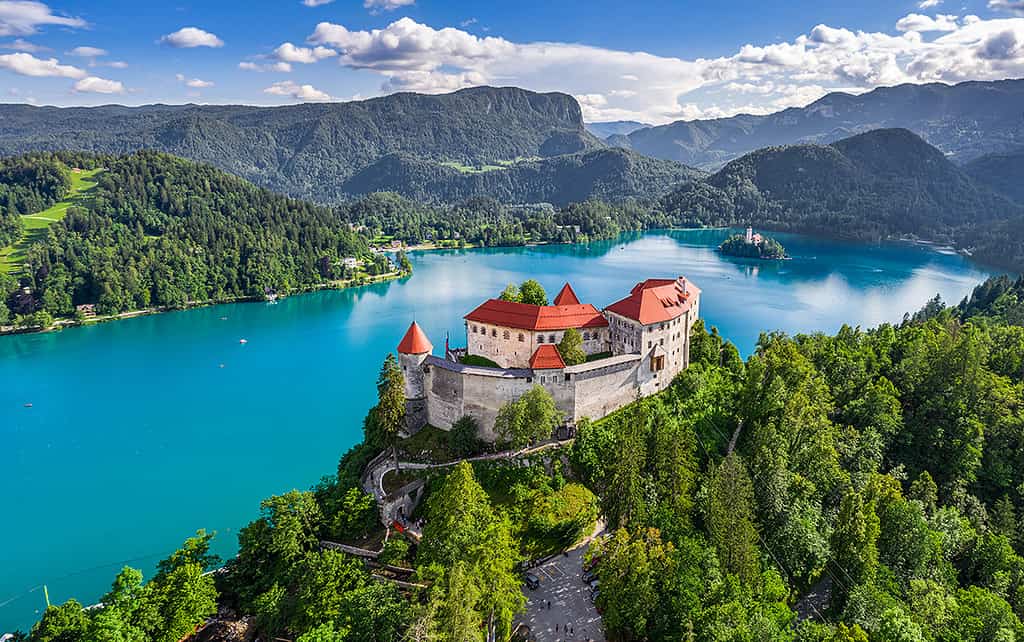
#9 | SLOVENIA🇸🇮
A legend says that when God distributed the land to all the nations, Slovenians were overlooked because there were so few of them (they are still just 2.1 million). To apologize, he gave them a little piece of paradise he saved for himself. Slovenia’s territory—half of which is covered by forests—boasts one of the greatest levels of biodiversity on the continent: with only one-hour drive from the capital Ljubljana, you can either swim in the Adriatic Sea or climb the Julian Alps. It is the only country from Central Europe to place in the top 10, making it the most peaceful nation in the CEE region.
Along with Slovenia, the Czech Republic, Hungary and Croatia too make it into the top 20, and Bulgaria, Slovakia and Latvia into the top 30. Of the 36 ranked countries in Europe, 13 had improvements in peacefulness and 23 saw deteriorations. The only European countries in the bottom half of the index are Cyprus (at number 88), Türkiye (139) and, perhaps surprisingly to some, France (86).
View Slovenia GDP and Economic Data
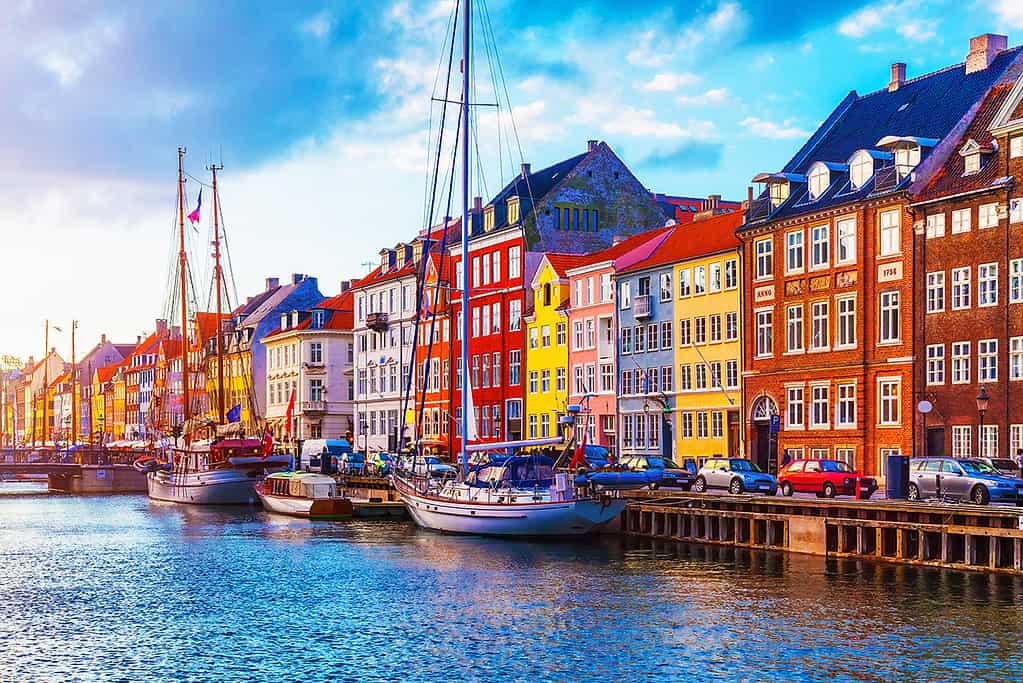
#8 | DENMARK🇩🇰
Sometimes gaining one or two spots and sometimes losing them, since 2008 Denmark never dropped below the fifth place in the Global Peace Index—that is until this year. Now ranked 8th, Denmark’s drop is more a result of other countries’ improvements than a significant decline in its own score, which has decreased by only 0.037% from last year.
Such relatively minor changes in the ranking only tell us that the kingdom is doing well. A safe country to travel and live in, Denmark is characterized by a high degree of political stability, freedom of the press and respect for human rights. It also boasts a high level of income equality and is frequently ranked as one of the happiest nations in the world.
To safeguard all that happiness and those excellent standards of living, this nation of less than 6 million spends a lot. In 2018, to counter the threat of Russia’s increasing military activity in eastern and northern Europe, Denmark reached a landmark cross-party political deal to increase its defense budget by 20%, on course to match its Nordic neighbors Sweden’s and Norway’s expenditure levels and reach the NATO membership target of 2% of national GDP in military spending. As a result, Denmark’s overall standing in the Peace Index is weighed down by its performance in the militarization domain, where it ranks 24th in the world. Things are likely to stay that way: in 2023, Denmark announced plans to invest the equivalent of $21 billion in defense over the next 10 years, a figure that was increased by an additional $5.1 billion in 2024.
View Denmark GDP and Economic Data
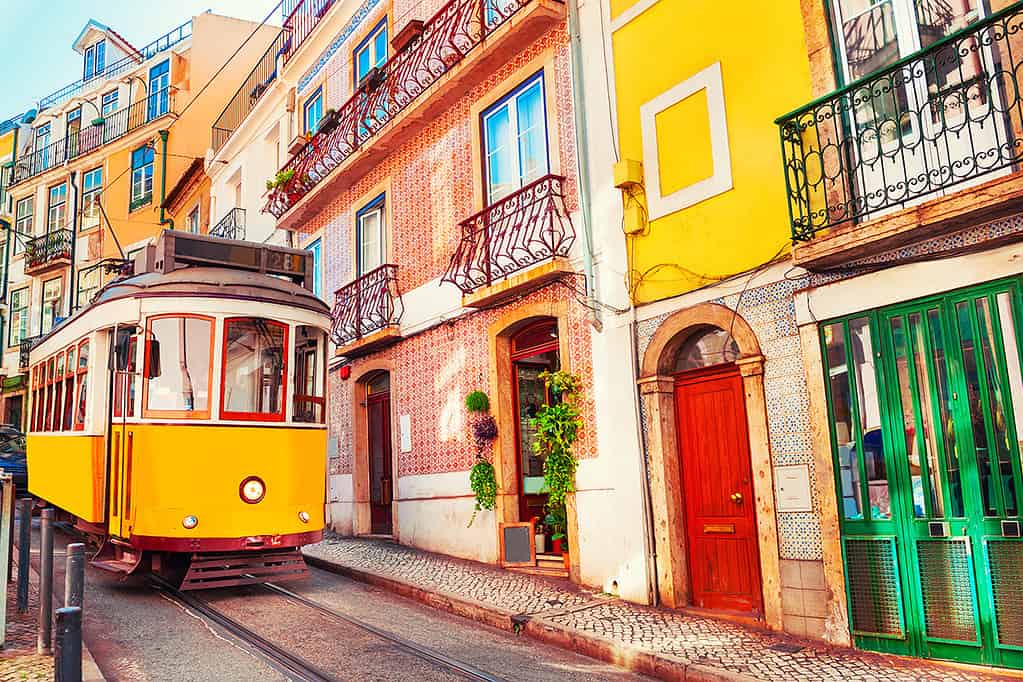
#7 | PORTUGAL🇵🇹
Portugal marches to the beat of its own drum when it comes to peace and safety. Over the past few years, this nation of about 10 million people has emerged as one of the biggest climbers of the Global Peace Index, moving from the 18th spot it held in 2014 into the top 10.
Ranking above the industrialized nations’ average in terms of housing, work-life balance, personal security and environmental quality, Portugal is also considered one of the top expat destinations due to its overall quality of life. Even better, there is no need to break the bank to enjoy the Portuguese way of living: the republic remains one of the most affordable destinations on the continent.
View Portugal GDP and Economic Data
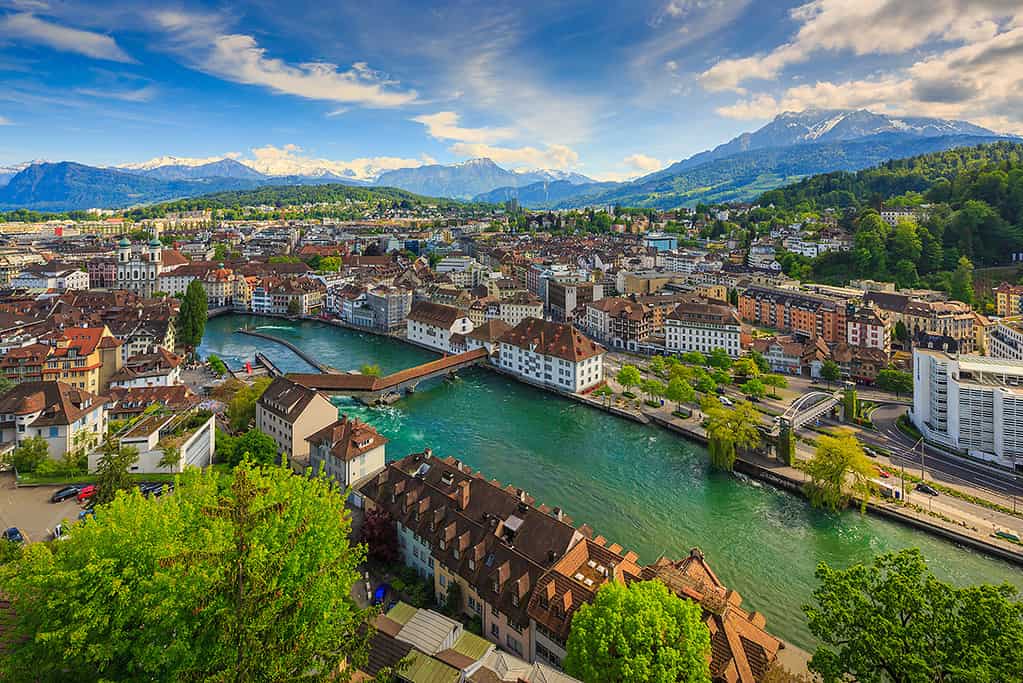
#6 | SWITZERLAND🇨🇭
Switzerland is exactly as one would expect: a place with an exceptionally high degree of safety in society, superior political stability, and close to inexistent international conflict. However, its surprising degree of militarization (total active and reserve army personnel number approximately 147,000 out of a population of about 8.9 million) keeps this nation from rising into the top 5. Switzerland—along with other well-ranking peaceful nations such as Canada, Singapore, Norway and the Netherlands—is also among the world’s top weapons exporters per capita.
Still, by most measures, Switzerland remains a prosperous country where linguistic and religious diversity is embraced. In ninth place in the United Nation’s Happiness Report, it also ranks above the average among OECD nations when it comes to subjective well-being, income, health and education and environmental quality.
View Switzerland GDP and Economic Data
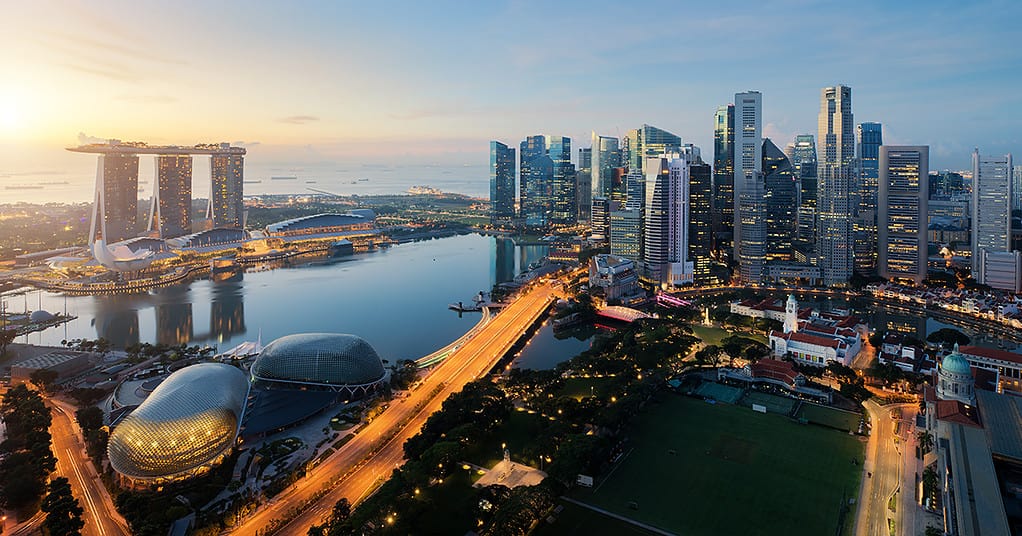
#5 | SINGAPORE🇦🇹
While the Global Peace Index report shows an increasingly violent world, Singapore has become more peaceful. Way more peaceful: when the ranking was first launched in 2008 Singapore occupied the 22nd spot. What prompted this remarkable jump? The IEP points out that the largest improvements in the ranking are usually broadly based while large deteriorations in peace are usually driven by just a few indicators.
So, while Singapore scored highly in societal safety and security and low levels of ongoing domestic and international conflict, holding it back from the highest tier of the ranking—like Switzerland—is its militarization level. Why does Singapore need so many people in its police and military forces and why is its arms expenditure so high? The city-state depends on seaborne trade for its prosperity, so having the naval resources to ensure the smooth passage of vessels through the Strait of Malacca, the narrow stretch of water that serves as a gateway between the Indian and Pacific Oceans, is crucial.
View Singapore GDP and Economic Data
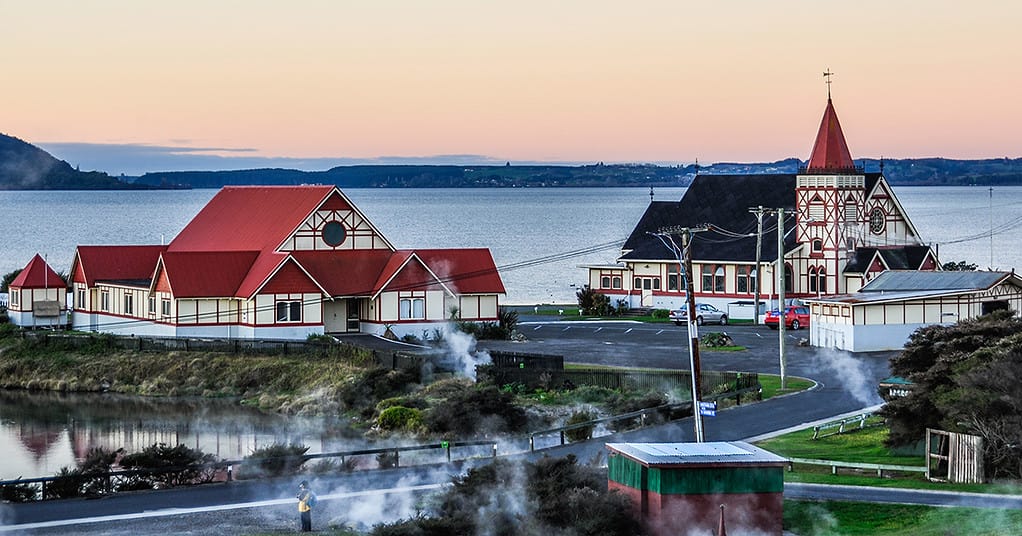
#4 | NEW ZEALAND🇳🇿
After holding on to the number two spot in the index since 2017, New Zealand slipped two spots to number four in last year’s edition of the Global Peace Index, and that’s where we find it this year too. Scoring almost perfect marks in the domains of societal safety and domestic and international conflict, this peaceful country is widely considered a wonderful place to live. Still, due to an increase in weapons imports and exports and upgrades on armed personnel carriers, New Zealand’s score in the militarization domain fell by 6% in last year’s edition of the index.
At around the same size as the United Kingdom but with a population of roughly 5.2 million people, New Zealand ranks above the average among OECD members in education, healthcare, jobs and earnings. All this, however, comes also at a cost: the shortage of affordable housing is increasingly making it difficult for people with low incomes to buy homes, with the gap between rich and poor considered the top economic issue facing New Zealand by 20% of its citizens.
View New Zealand GDP and Economic Data
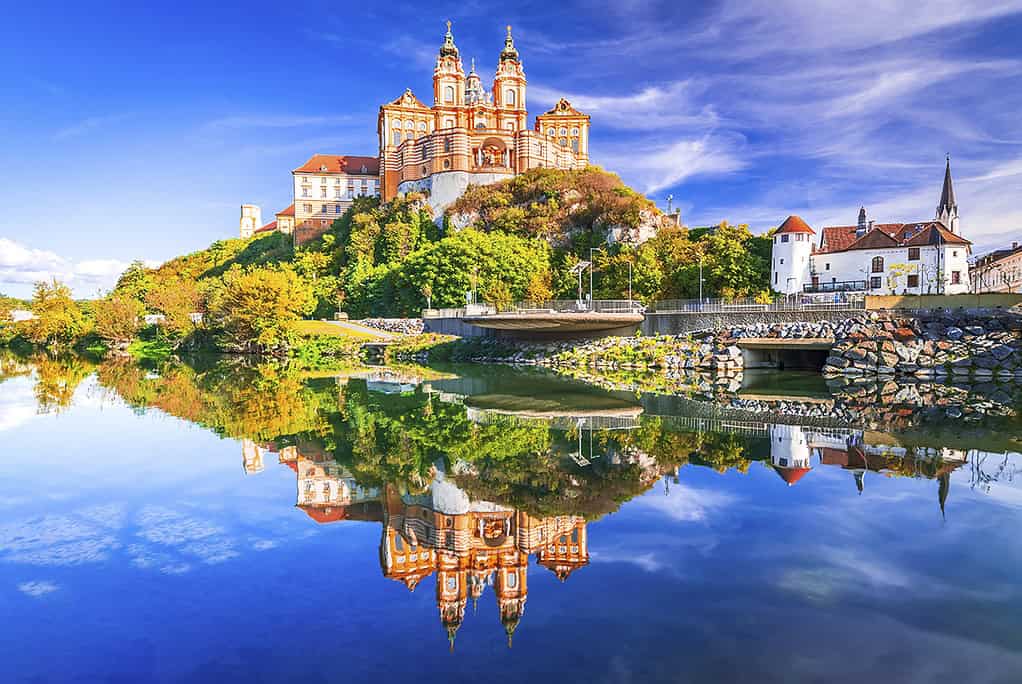
#3 | AUSTRIA🇦🇹
Since the end of the Cold War, this small landlocked country of about 9 million moved from its peripheral position at the borderline between East and West closer to the center of a united Europe. As a young member of the EU and outside of NATO, Austria prided itself on trying to get along with rival political blocs and embracing new forms of cooperation with its neighbors.
However, while Austria performs well in many measures of wellbeing such as income, jobs and housing, social tensions have been growing in recent years fueled especially by anti-migrant campaigns of the popular right-wing Freedom Party (FPÖ). When in November 2020 an ISIS sympathizer shot and killed 4 people and injured 23 others in the city center of Vienna, the government responded by unveiling broad anti-terror measures that included the ability to keep convicted individuals behind bars for life and facilitate electronic surveillance for those who are released. As a consequence, Austria experienced one of the largest deteriorations in peacefulness in Europe owing to a worsening of the terrorism impact indicator. Additionally, amidst the COVID-19 pandemic, its capital has been the epicenter of significant protests against both lockdown measures and the government’s mandate to enforce compulsory vaccination for all citizens. Since then, the support for the FPÖ has only grown: today it is the country’s leading political party.
View Austria GDP and Economic Data
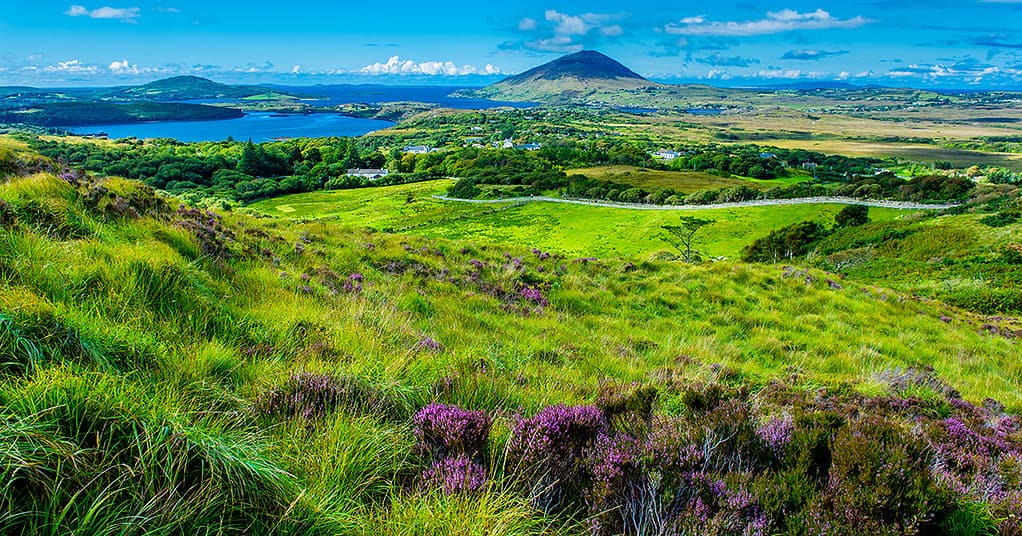
#2 | IRELAND🇮🇪
Ireland is one of the wealthiest, most developed and happiest nations in the world. It is also quite peaceful: in 2020, it managed to gain seven positions and land in the fourth spot of the Global Peace Report, the highest position it had ever attained in the ranking. In the following years, it occupied either the third or the second position, which is where we find it today.
Make no mistake: Ireland did not become a peace-loving nation overnight—centuries of tense relations with the United Kingdom can attest to that. Today though, due also to its longstanding independent status and neutral army (meaning that it is not a member of NATO), the Irish Republic is routinely ranked as one of the safest countries in the world. That does not mean it has become immune from political and social turmoil—during the pandemic, for example, Ireland saw its share of violent anti-lockdown demonstrations.
On page 84 of its study, the IEP reveals a striking piece of data: when it comes to the economic cost of violence, Ireland performs better than almost all countries in the world. Ranking 159th out of 163 nations, the toll is just 2.86% of the GDP compared to the global average, 13.5%. Only Malawi, Bangladesh, Indonesia and Madagascar perform slightly better in this domain.
View Ireland GDP and Economic Data
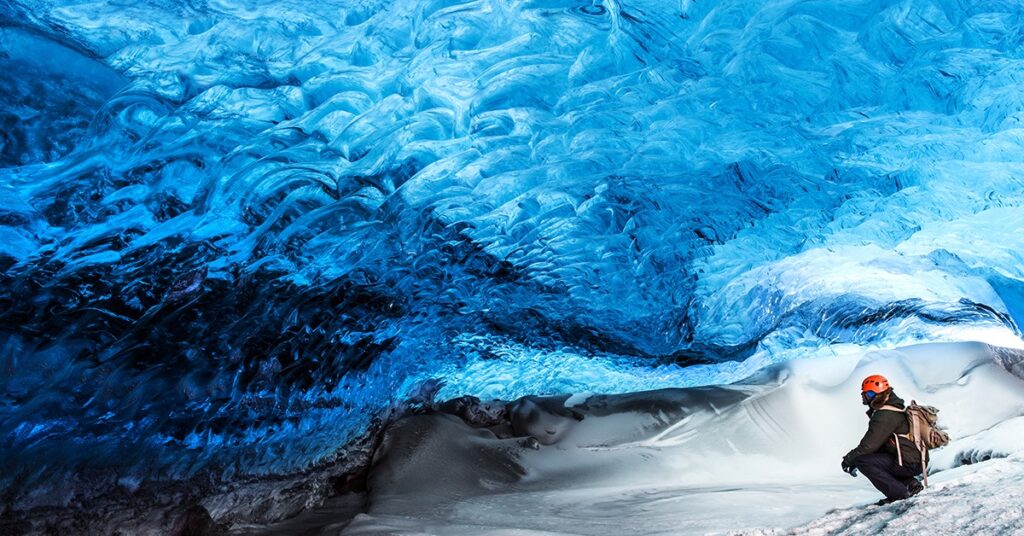
#1 | ICELAND: The Most Peaceful Country in The World
Icelanders can sleep well at night: they live in the most peaceful nation in the world. No news is good news when it comes to tranquil Iceland: it is the 17th year in a row that it retains the number one spot—since the index began in 2008. With no standing army, navy or air force and the smallest population of any NATO member state (about 390,000 people), Iceland also enjoys record-low crime rates (to the extent that policemen generally don’t carry firearms), an enviable education and welfare system, and ranks among the best nations in terms of jobs and earnings and subjective sense of wellbeing.
But did we say that Icelanders’ idyllic peace faces no threats? In 2022, the Reykjavík police arrested four people in connection with preparations for a suspected terrorist attack. That was the first year that the country recorded any of such activity. Luckily, no further incidents have been reported since then.
View Iceland GDP and Economic Data
WORLD’S MOST PEACEFUL NATIONS: FULL RANKING
Source: Global Peace Index 2024.